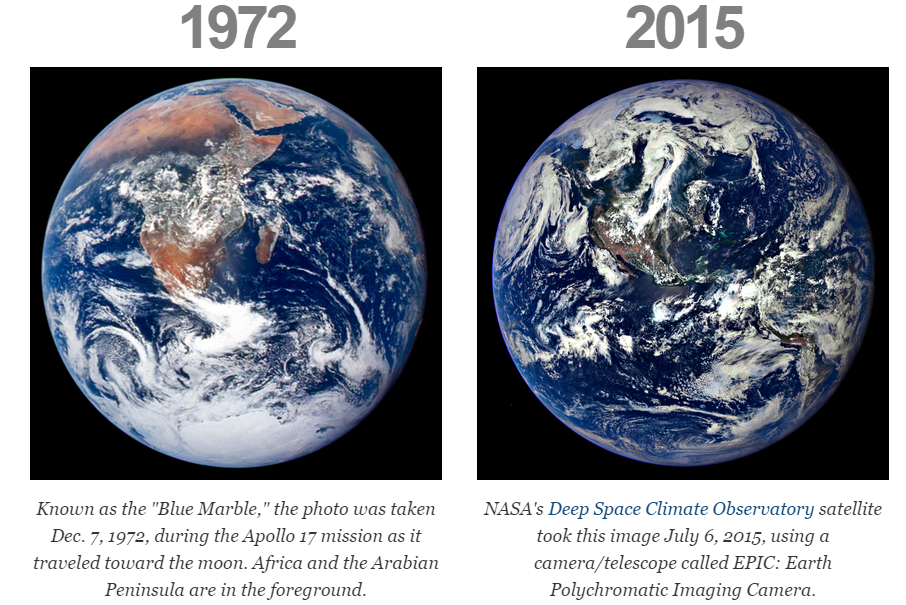by Chicago Tribune
The 1972 “Blue Marble” photo of Earth offered a previously unseen view of the world: A single image of the planet lit by the sun. In an instant, the image became iconic.
Since that time, many satellite photos of Earth have been taken in different ways and from different views. Usually, because the satellites aren’t far enough away, a series of images must be “stitched together” to create a complete image.
This month, more than four decades after the marble photo, NASA released a new image from a satellite 1 million miles away that puts Earth, again, in a single frame. Full disclosure, according to NASA: In order to create the new photo three images with different kinds of light had to be combined, though Earth was shown in each as a whole.
Along with its primary mission of monitoring solar winds, the DSCOVR satellite will produce regular images of Earth much more often. Starting in September, NASA will post photos from DSCOVR every day.
Two pictures, same planet, 43 years apart.

MORE YOU GOTTA SEE THIS
Please join our FREE Newsletter


















